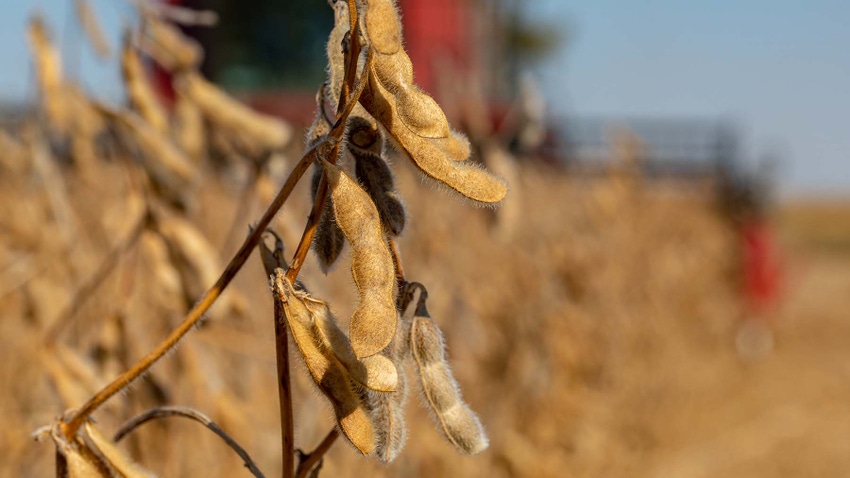
The $1 price rally that soybean futures enjoyed during early March has nearly all been lost in recent weeks, potentially approaching the February low of $11.40-1/2 for the July 2024 futures contract.
What’s happened
Soybean futures prices continue to be under the pressure of increased South American supplies along with U.S. ending stocks that have been slowly edging higher since November of 2023. Is there any hope for a price rally in the coming weeks?
From a marketing perspective
The fundamentals news for soybean prices remains mixed, with some aspects friendly and some aspects negative.
Export demand for U.S. soybeans has been waning as the increased supply and competition from both Brazil and Argentine weighs on U.S. demand. The most recent USDA report has U.S. soybean export demand pegged at 1.72 billion bushels, down from 1.992 billion bushels in 2022/23, and down from 2.152 billion bushels in 2021/22.
In my opinion, it may be likely that we continue to see reduced export demand for U.S. soybeans due to the behemoth Brazilian crop. The reality is that unless Brazil or Argentina faces arduous growing conditions in future years, which results in lower production, they are currently a favored global supplier of soybeans for many countries.
However, the world will continue to need U.S. soybeans. One thing to note is that China will continue to be a net importer of soybeans. According to the USDA, China’s domestic demand for soybeans is 120.50 million metric tons, relying on imports of 105 million metric tons to meet their needs. China also imports soybeans year-round to meet their needs, relying on suppliers in both global hemispheres.
South America supplies a hefty portion of China’s soybeans during the months of March and April as the South American harvest is wrapping up. They will also rely on supplies from the United States in the Northern Hemisphere, which are harvested in October and November.
China likely always will need U.S. soybeans because their demand is so great. China also is shrewd at business, not wanting to solely rely on one country for all their needs. Therefore, they will continue to buy beans from both South America and the United States.
Crush demand remains strong in the United States and is slated to grow in the coming years. The most recent USDA report said that U.S. soybeans used for crush are pegged at 2.3 billion bushels, up from 2.212 billion in 2022/23, and up from 2.204 billion in 2021/22.
The most recent National Oilseed Processing Association (NOPA) crush report suggested that members crushed a record 196.4 million bushels of soybeans in March 2024. Industry analysts have recently implied that year-to-date crush data for the first seven months of the 2023/24 marketing year (which began in September 2023) are at 1.377 billion bushels, up 5.3% from one year ago at this time. The USDA has been expecting an increase of the crush this marketing year. However, recent numbers are ahead of USDA projections, which suggests that in upcoming reports, the USDA may increase crush demand.
With more crush plants coming online in the United States demand for soybean crush likely will continue to grow over the next few years.
Prepare yourself
From a fundamental perspective, demand for U.S. soybeans is mixed. Lost export demand has been the catalyst for ending stocks to creep higher over the past few months. Looking forward prices may have a muted response as demand fundamentals are largely priced in. Trade now will focus on upcoming U.S. planting progress and summer weather forecasts.
The demand side of the equation seems to be “known” with traders pondering the supply numbers. What will final U.S. planted soybean acres be? Will there be any weather issues in the coming weeks or months in the United States that would adversely affect soybean production?
One thing to be prepared for is a potential summer weather rally. Should one occur, that may provide a marketing opportunity for the last of your old crop soybeans and a jump start on pricing new crop.
Reach Naomi Blohm at 800-334-9779, on X (previously Twitter): @naomiblohm, and at [email protected].
Disclaimer: The data contained herein is believed to be drawn from reliable sources but cannot be guaranteed. Individuals acting on this information are responsible for their own actions. Commodity trading may not be suitable for all recipients of this report. Futures and options trading involve significant risk of loss and may not be suitable for everyone. Therefore, carefully consider whether such trading is suitable for you in light of your financial condition. Examples of seasonal price moves or extreme market conditions are not meant to imply that such moves or conditions are common occurrences or likely to occur. Futures prices have already factored in the seasonal aspects of supply and demand. No representation is being made that scenario planning, strategy or discipline will guarantee success or profits. Any decisions you may make to buy, sell or hold a futures or options position on such research are entirely your own and not in any way deemed to be endorsed by or attributed to Total Farm Marketing. Total Farm Marketing and TFM refer to Stewart-Peterson Group Inc., Stewart-Peterson Inc., and SP Risk Services LLC. Stewart-Peterson Group Inc. is registered with the Commodity Futures Trading Commission (CFTC) as an introducing broker and is a member of National Futures Association. SP Risk Services, LLC is an insurance agency and an equal opportunity provider. Stewart-Peterson Inc. is a publishing company. A customer may have relationships with all three companies. SP Risk Services LLC and Stewart-Peterson Inc. are wholly owned by Stewart-Peterson Group Inc. unless otherwise noted, services referenced are services of Stewart-Peterson Group Inc. Presented for solicitation.
About the Author(s)
You May Also Like






